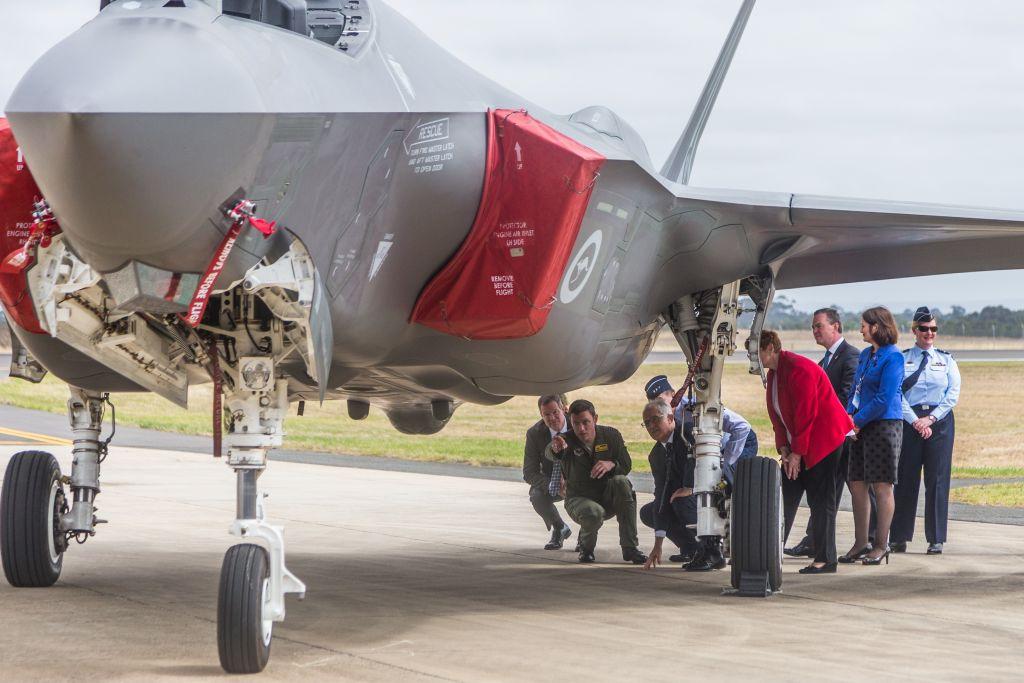Australia’s defence: the tangle of kit, costs and complexity
Posted By Graeme Dobell on November 11, 2019 @ 06:00

‘Strategy without money is not strategy.’ —Arthur Tange*
‘Everything is very simple in war, but the simplest thing is difficult.’ —Carl von Clausewitz*
Australian governments are always trying to simplify defence and rein in costs.
In Canberra’s world of inputs, outputs and deliverables, defence is the big-bucks beast [1] that eats much and always demands more. And what, exactly, does the beast deliver for a nation that has its own continent?
To put the question more formally: What is the optimal defence strategy of an affluent and stable country with no land borders that has never in its modern history experienced enemy soldiers setting foot on its land?
The conundrum was well presented 50 years ago in a wonderful Bruce Petty cartoon, headed ‘The great defence shake-up’.
A senior Oz military officer is sitting at his desk, amid a clutter of paper and models of military kit, yelling in frustration: ‘For the 500th time can somebody tell me. It’d be a great help. In the light of current allied attitudes: WHO ARE WE TO DEFEND! AGAINST WHAT?’
A civilian bursts through the door and announces that it’s time for streamlining and a basic restructure, declaring: ‘Defence planning must assume a new FLEXIBILITY. Our goal is a new dimension in departmental cooperation.’
The maps and model planes and rockets are swept from the desk and the uniformed officer is plonked on top of the filing cabinet. The be-suited bureaucrat plugs in his electric kettle, organises the rubber bands, then sits at the newly cleared desk and announces to the officer: ‘Now all I want from you is: Who are we to defend against what?’
The civilian is booted out and the process begins all over again.
When Petty drew that cartoon, Australia was deeply involved with the US in losing a war in Vietnam. Yet, even as Vietnam was spiralling away, the visiting British strategist Michael Howard could observe: ‘The real defence problem of Australia is, in fact, that it does not have a defence problem: that there is not at present a single cloud on the horizon that seriously threatens Australian security.’
Fifty years on, there’s a growing cloud called China. Lots of other stuff, though, looks familiar. The continent is still secure. Now, as then, Australia worries about the US withdrawing from Asia. Still we ponder the reliability of the alliance. As ever, Canberra grapples with the complexities of the defence beast and how expensive it is to feed.
The cash that Canberra throws at the beast has much to do with the cost of the military kit. See, for instance, the latest rumination from Andrew Davies and Marcus Hellyer on the very hungry future submarine [2].
The kit is fiendishly expensive and complicated because government and bureaucracy grapple with Clausewitz’s truth (doing simple things in battle is hard) while confronting Augustine’s laws [3]. The laws are the aphoristic observations of Norman R. Augustine [4], an American aerospace engineer who did several stints in the Pentagon. Among my Augustine favourites:
- The last 10% of performance generates one-third of the cost and two-thirds of the problems.
- The process of competitively selecting contractors to perform work is based on a system of rewards and penalties, all distributed randomly.
- The weaker the data available upon which to base one’s conclusion, the greater the precision which should be quoted in order to give the data authenticity.
- Simple systems are not feasible because they require infinite testing.
- Hardware works best when it matters the least.
But the one that gets the most use is his rule that defence budgets grow linearly while the unit cost of new military aircraft grows exponentially. Canberra gets a tick for smarts for not trying to build military aircraft. Instead, we’ll build submarines.
The tangle of kit, costs, complexity and strategy explain why the Department of Defence is the most inquiry-prone creature in Canberra. Defence has had 50 reviews [5] since 1973 and is now working on a new strategic review [6].
The 1973 start point is when Arthur Tange brought forth the New Testament [7] (the Tange review) to unite the military tribes and turn the herd into a single beast. The Tange review and Petty’s cartoon come from the same era—and today there’s still plenty of sameness to savour.
Still, prime ministers puzzle, defence ministers struggle and treasurers rage [1]. Admiration and appreciation mingle with exasperation and frustration.
The beast will never be tame. But how well can it be ridden? To be continued …
* The Tange quote is as reported by Paul Dibb in Australia’s defence: towards a new era [8] (page 166). The Clausewitz quote is from On war [9] in his chapter on the difficulties and friction of conflict.
Article printed from The Strategist: https://aspistrategist.ru
URL to article: /australias-defence-the-tangle-of-kit-costs-and-complexity/
URLs in this post:
[1] big-bucks beast: /the-big-beast-that-is-the-defence-department/
[2] very hungry future submarine: /the-very-hungry-future-submarine/
[3] Augustine’s laws: https://en.wikipedia.org/wiki/Augustine%27s_laws
[4] Norman R. Augustine: https://en.wikipedia.org/wiki/Norman_Ralph_Augustine
[5] 50 reviews: /a-first-look-at-the-first-principles-review/
[6] strategic review: /defences-strategic-reassessment-squaring-the-circle-with-tied-hands/
[7] New Testament: /the-new-and-old-testaments-of-defence/
[8] Australia’s defence: towards a new era: https://www.mup.com.au/books/australias-defence-hardback
[9] On war: http://clausewitz.com/readings/OnWar1873/BK1ch07.html
Click here to print.